The latest details about Russia’s attack on Ukraine:
BERLIN — In a significant shift, the German government confirmed Saturday that it had approved the shipment of anti-tank weapons to Ukraine and supports some restrictions of the SWIFT global banking system for Russia.
The German economy and climate ministry said in a Saturday evening statement that Germany is allowing the Netherlands to ship 400 German-made anti-tank weapons to Ukraine.
“The Russian invasion of Ukraine marks a turning point. It threatens our entire post-war order,” German Chancellor Olaf Scholz said in the statement. “In this situation, it is our duty to do our best to help Ukraine defend itself against Vladimir Putin’s invading army.”
Germany had long stuck to a policy of not exporting deadly weapons to conflict zones, including Ukraine. As recently as Friday, government officials said they would abide by that policy.
The country has faced criticism from Ukrainian officials and other allies that it has not acted decisively enough to help Ukraine fend off the Russian invasion. Previously, Germany contributed 5,000 helmets to Ukraine’s defense.
In addition, Germany said it will send 14 armored vehicles and up to 10,000 tons of fuel to Ukraine.
“After Russia’s shameless attack, Ukraine must be able to defend itself,” Foreign Minister Annalena Baerbock and Economy Minister Robert Habeck said. “The federal government is therefore supporting Ukraine in providing urgently needed material.”
Baltic airspace to shut down airspace to Russian flights
HELSINKI — The Baltic nations of Estonia, Latvia and Lithuania have decided to close their airspace to Russian airlines, transport officials in the three countries say.
The legal formulation for the measure is underway and it wasn’t immediately clear when precisely the ban would take effect.
Lithuanian Transport Marius Skuodis told media outlets that the goal of the Baltic countries is to issue the ban at the same time.
Estonian Prime Minister Kaja Kallas tweeted on Saturday that Western nations should isolate Russia both economically and politically after its invasion on Ukraine, saying “there is no place for planes of the aggressor state in democratic skies.”
Latvian Transport Minister Talis Linkaits told local news agency LETA that the country’s decision to close its airspace to Russian airlines will be made in coordination with Estonia, Lithuania and the EU.
Roughly 75,000 Russian troops have now entered Ukraine; the push toward Kyiv continues
KYIV, Ukraine — Kyiv residents braced Saturday for another night sheltering underground, as Russian troops closed in on Ukraine’s capital and skirmishes were reported on the outskirts. Ukraine’s leader, meanwhile, claimed the country’s forces had repulsed the Russian assault and vowed to keep up the struggle as he appealed for more outside help.
“The real fighting for Kyiv is ongoing,” President Volodymyr Zelenskyy said in a video message in which he accused Russia of hitting infrastructure and civilian targets.
“We will win,” he said.
Central Kyiv appeared quiet on Saturday, though sporadic gunfire could be heard. And fighting on the city’s outskirts suggested that small Russian units were trying to clear a path for the main forces. Britain and the U.S. said the bulk of Russian forces were 19 miles (30 kilometers) from the center of the city.
A senior U.S. defense official said the United States estimates that more than 50 percent of Russian combat power arrayed along Ukraine’s borders has entered Ukraine. That is up from a U.S. estimate Friday that one-third of the Russian force had been committed to the fight.
The official, who spoke on condition of anonymity to discuss internal U.S. assessments, would not say how many Russian troops that amounts to inside Ukraine, but the U.S. had estimated the total Russian force arrayed near Ukraine at more than 150,000.
The official said advancing Russian forces were roughly 30 kilometers outside Kyiv as of Saturday, and that an unspecified number of Russian military “reconnaissance elements” had entered the capital.
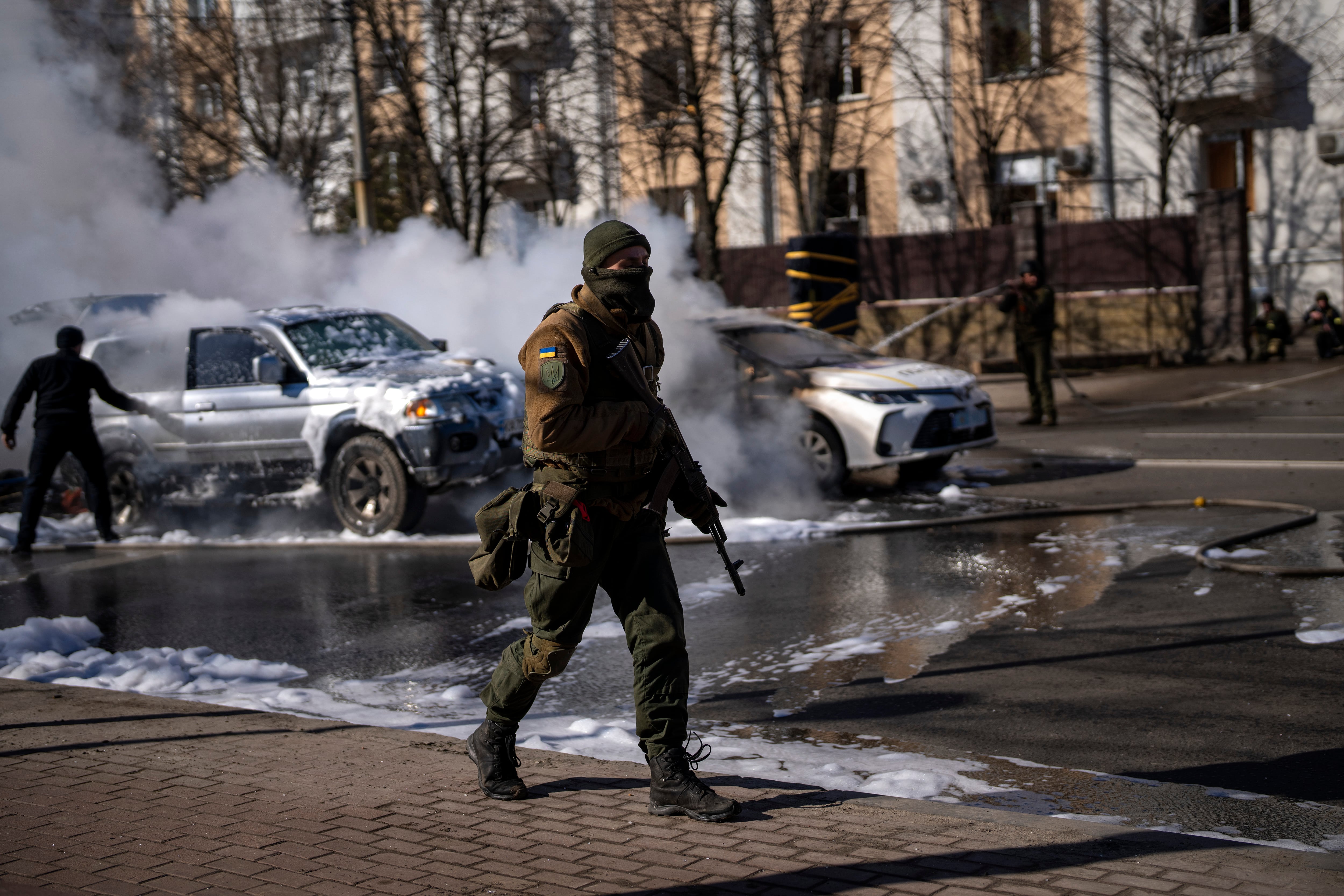
Meanwhile, Britain’s Defense Ministry said Saturday that “the speed of the Russian advance has temporarily slowed likely as a result of acute logistical difficulties and strong Ukrainian resistance.”
“Russian forces are bypassing major Ukrainian population centres while leaving forces to encircle and isolate them,” the ministry said.
Kyiv Mayor Vitali Klitschko extended an overnight curfew to run from 5 p.m. Saturday until 8 a.m. on Monday. He said “all civilians on the street during the curfew will be considered members of the enemy’s sabotage and reconnaissance groups.”
Russia claims its assault on Ukraine is aimed only at military targets, but bridges, schools and residential neighborhoods have been hit since the invasion began Thursday with air and missile strikes and Russian troops entering Ukraine from the north, east and south.
Ukraine’s health minister reported Saturday that 198 people, including three children, had been killed and more than 1,000 others had been wounded during Europe’s largest land war since World War II. It was unclear whether those figures included both military and civilian casualties.
More than 100,000 flee Ukraine as Russians press attack on Kyiv
Russian troops pressed toward Ukraine’s capital Saturday after a night of explosions and street fighting sent Kyiv residents seeking shelter underground. The country’s leader refused an American offer to evacuate, insisting he would stay. “The fight is here,” President Volodymyr Zelenskyy said.
It was not immediately clear how far Russian troops had advanced. Ukrainian officials reported some success in fending off assaults, but fighting persisted near the capital. Skirmishes reported on the edge of the city suggested that small Russian units were trying to clear a path for the main forces.
Russia claims its assault on Ukraine is aimed only at military targets, but civilians have been killed and injured during Europe’s largest ground war since World War II.
A missile struck a high-rise apartment building in the city’s southwestern outskirts near one of Kyiv’s two passenger airports, Mayor Vitali Klitchsko said, leaving a jagged hole of ravaged apartments over several floors. A rescue worker said six civilians were injured.
The mayor extended a 10 p.m.-7 a.m. curfew he imposed two days to run from 5 p.m. until 8 a.m. as of Saturday.
RELATED

“All civilians on the street during the curfew will be considered members of the enemy’s sabotage and reconnaissance groups,” Klitschko said.
The conflict has already driven hundreds of thousands of Ukrainians from their homes. U.N. officials said more than 120,000 Ukrainians have left the country for Poland, Moldova and other neighboring nations.
Saturday’s street clashes followed two days of massive air and missile strikes as Russian soldiers moved in from the north, east and south. The assault pummeled bridges, schools and residential neighborhoods, and resulted in hundreds of casualties.
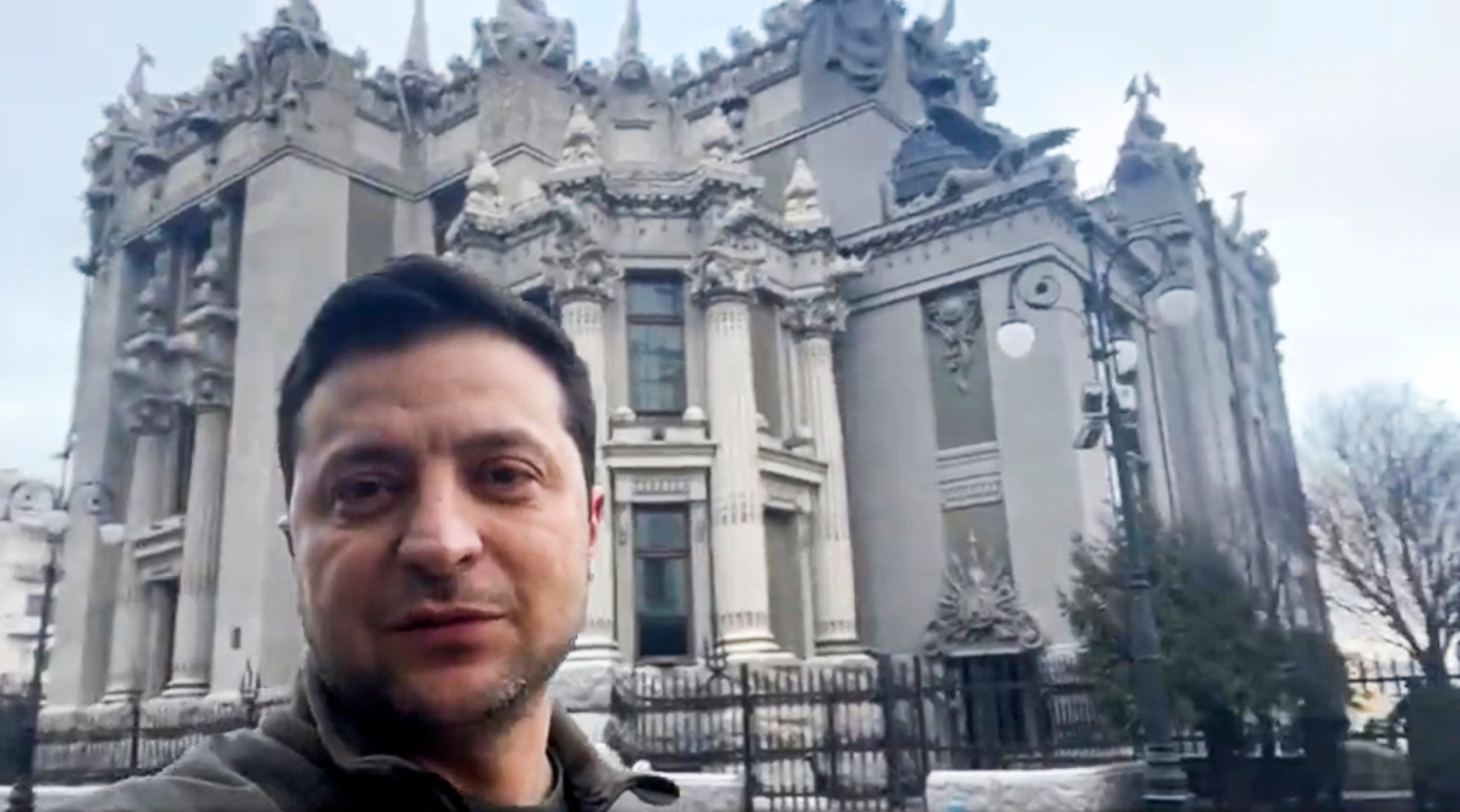
It was unclear in the fog of war how much of Ukraine was still under Ukrainian control and how much Russian forces have seized. Russia’s defense ministry claimed the Russian military had taken full control of the southern city of Melitopol, about 22 miles (35 kilometer)s inland from the Azov Sea coast, and said Russia-backed separatists had made significant gains in the eastern region of Donbas.
Ukrainian and Western officials, however, say Ukrainian forces have managed to slow the Russian advance. Ukraine’s Infrastructure Ministry said a Russian missile was shot down before dawn Saturday as it headed for the dam of the sprawling water reservoir that serves Kyiv.
Western officials believe Russian President Vladimir Putin is determined to overthrow Ukraine’s government and replace it with a regime of his own. The invasion represented Putin’s boldest effort yet to redraw the map of Europe and revive Moscow’s Cold War-era influence. It triggered new international efforts to end the invasion, including direct sanctions on Putin.
Zelenskyy offered renewed assurance Saturday that the country’s military would stand up to the Russian invasion. In a defiant video recorded on a downtown Kyiv street, he said he remained in the city and that claims the Ukrainian military would put down arms were false.
“We aren’t going to lay down weapons. We will protect the country,” the Ukrainian president said. “Our weapon is our truth, and our truth is that it’s our land, our country, our children. And we will defend all of that.”
RELATED
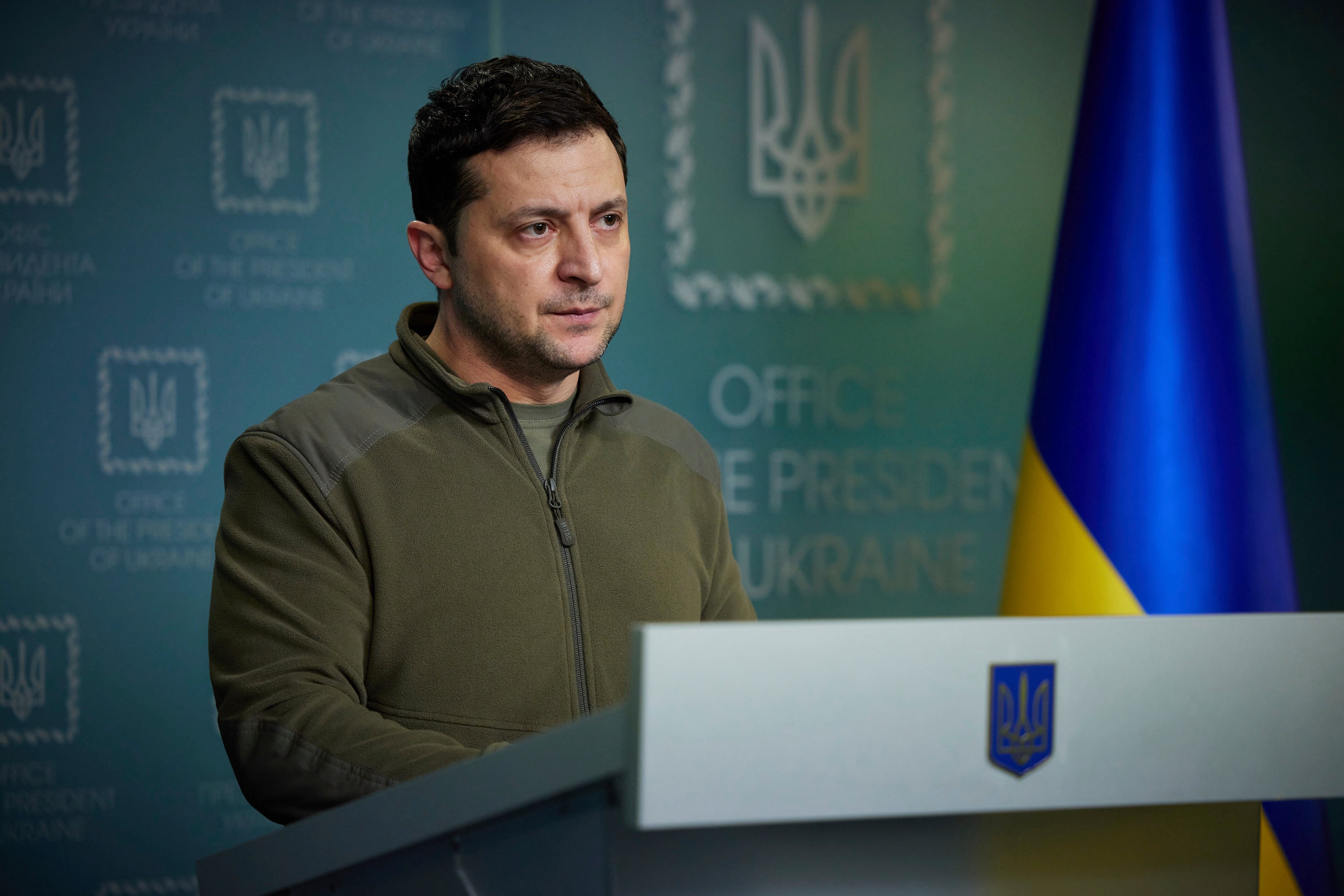
Zelenskyy said in a second video later Saturday Moscow’s plan to quickly seize the capital and install a puppet government had been unsuccessful. In an emotional speech, he accused the Russian forces of hitting civilian areas and infrastructure.
The president’s whereabouts were kept secret after he told European leaders in a call Thursday that he was Russia’s No. 1 target — and that they might not see him again alive.
The U.S. government urged Zelenskyy early Saturday to evacuate Kyiv but he turned down the offer, according to a senior American intelligence official with direct knowledge of the conversation. The official quoted the president as saying that “the fight is here” and that he needed anti-tank ammunition but “not a ride.”
The official spoke on condition of anonymity because he was not authorized to speak to the media.
Ukraine’s health minister reported Saturday that 198 people,, including three children, have been killed and more than 1,000 others have been wounded since the Russian offensive started before dawn Thursday. It was unclear whether the figure included both military and civilian casualties.
Ukrainian officials say hundreds of Russians have been killed in the first days of fighting. Russian authorities released no casualty figures.
The U.N. estimates that up to 4 million could flee if the fighting escalates. Refugees arriving in the Hungarian border town of Zahony said men of fighting age were not being allowed to leave Ukraine.
“My son was not allowed to come. My heart is so sore, I’m shaking, I can’t calm down, they did not let him come,” said Vilma Sugar, 68.
City officials in Kyiv urged residents to seek shelter, to stay away from windows and to take precautions to avoid flying debris or bullets. Many spent the night in basements, underground parking garages and subway stations.
“We’re all scared and worried. We don’t know what to do then, what’s going to happen in a few days,” said Lucy Vashaka, 20, a worker at a small Kyiv hotel.
A British official, Armed Forces Minister James Heappey, said fighting in the capital was so far confined to “very isolated pockets of Russian special forces and paratroopers” and that “the main armored columns approaching Kyiv are still some way off.”
The United States and other global powers moved to freeze the assets of Putin and his foreign minister Friday as part of tougher sanctions on Russia as the invasion reverberated through the world’s economy and energy supplies.
Mass exodus underway
Nearly 120,000 people have so far fled Ukraine into Poland and other neighboring countries in the wake of Russian invasion, the U.N. refugee agency said on Saturday.
The number was going up fast as Ukrainians grabbed their belongings and rushed to escape from a deadly Russian onslaught on their nation, including an attempt to take the capital.
Poland has declared its border open to fleeing Ukrainians, even for those without official documents.
On Saturday a government official also said that the country sent a hospital train that will pick up those wounded in the war in Mostyska, in western Ukraine, and bring them to Warsaw for treatment.
The hospital train departed the border town of Przemysl and has five carriages adapted to transport the wounded and four stocked with humanitarian aid for Ukraine’s Lviv district.
Some Ukrainian men were also reportedly heading back into Ukraine from Poland to take up arms against the Russian forces.
They were exceptions, though, in what was primarily an exodus from Ukraine.
“Almost 116,000 have crossed international borders as of right now. This may go up, it’s changing every minute,” said Shabia Mantoo, the spokeswoman of the U.N. High Commissioner for Refugees. “It’s very fluid and changing by the hour.”
The agency expects up to 4 million Ukrainians could flee if the situation deteriorates further.
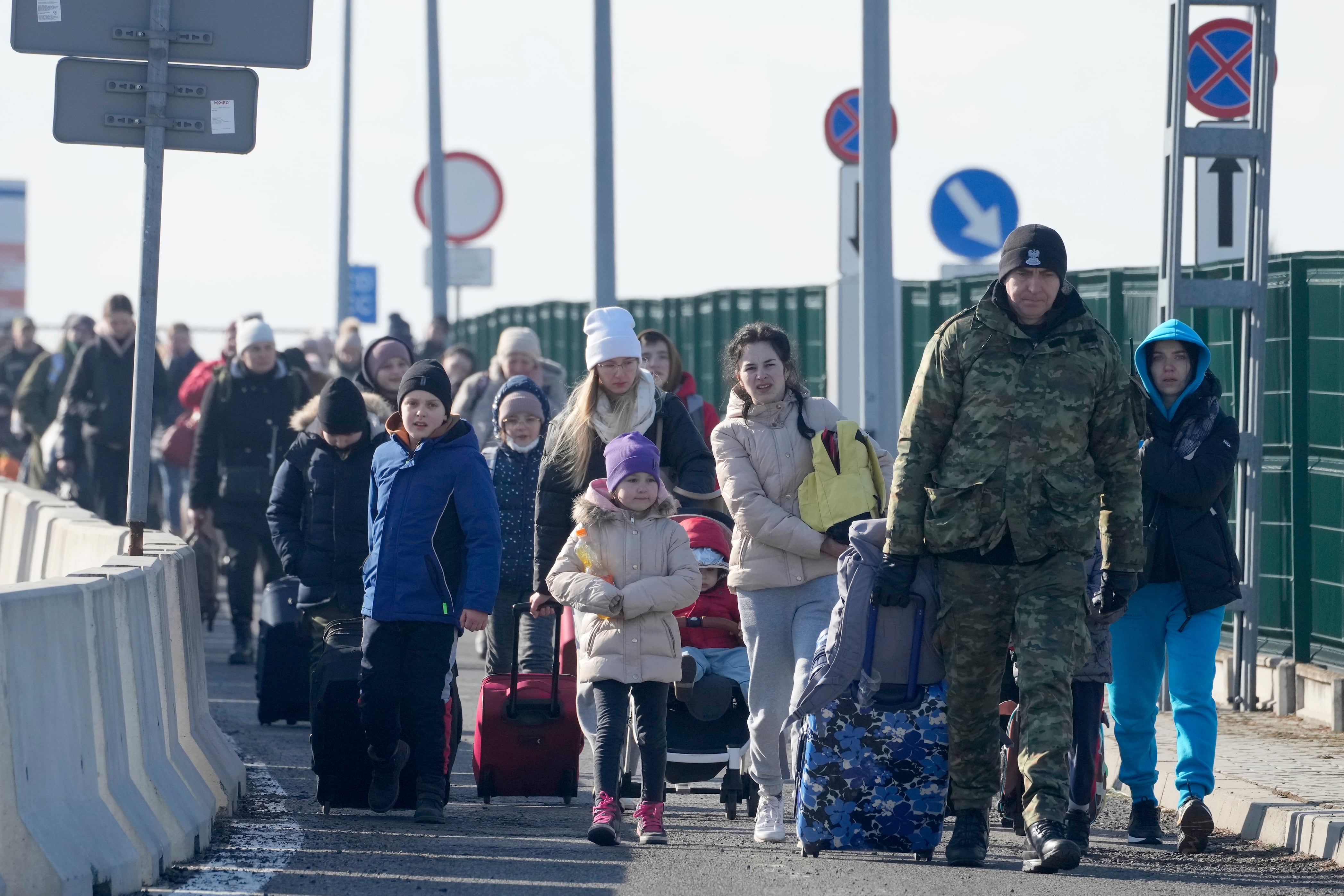
Those arriving were mostly women, children and the elderly after Ukrainian President Volodymyr Zelenskyy on Thursday banned men of military age from leaving the country.
Mantoo said most were heading to neighboring Poland, Moldova, Hungary, Romania and Slovakia, and even some into Belarus — from which some Russian forces entered Ukraine.
She did not immediately have details on numbers by country, but by far the largest numbers were arriving in Poland, where some 2 million Ukrainians have already settled to work in recent years, driven away by Russia’s first incursions into Ukraine in 2014 and seeking opportunities in the booming economy of the European Union neighbor.
Poland’s government said Saturday morning that more than 100,000 Ukrainians had crossed the Polish-Ukrainian border in the past 48 hours.
At the Medyka border crossing, a line of vehicles waiting to enter Poland stretched 15 kilometers (9 miles) into Ukraine, according to people crossing the border, Polish broadcaster TVN24 reported.
Biden, NATO leaders agree to bolster eastern forces after Russian invasion
U.S. President Joe Biden and his NATO counterparts agreed Friday to reassure member countries on the alliance’s eastern flank by sending parts of the organization’s response force to help protect them following Russia’s invasion of Ukraine.
With Ukrainian President Volodymyr Zelenskyy appealing for help, NATO members ranging from Russia’s neighbor Estonia in the north down to Bulgaria on the Black Sea coast triggered urgent consultations about their security. Only Hungary refrained.
The leaders, meeting via videoconference, took stock of NATO’s own military buildup.
Speaking after chairing the summit, NATO Secretary General Jens Stoltenberg said the leaders decided to send parts of the NATO Response Force and elements of a quickly deployed spearhead unit to member nations in Europe.
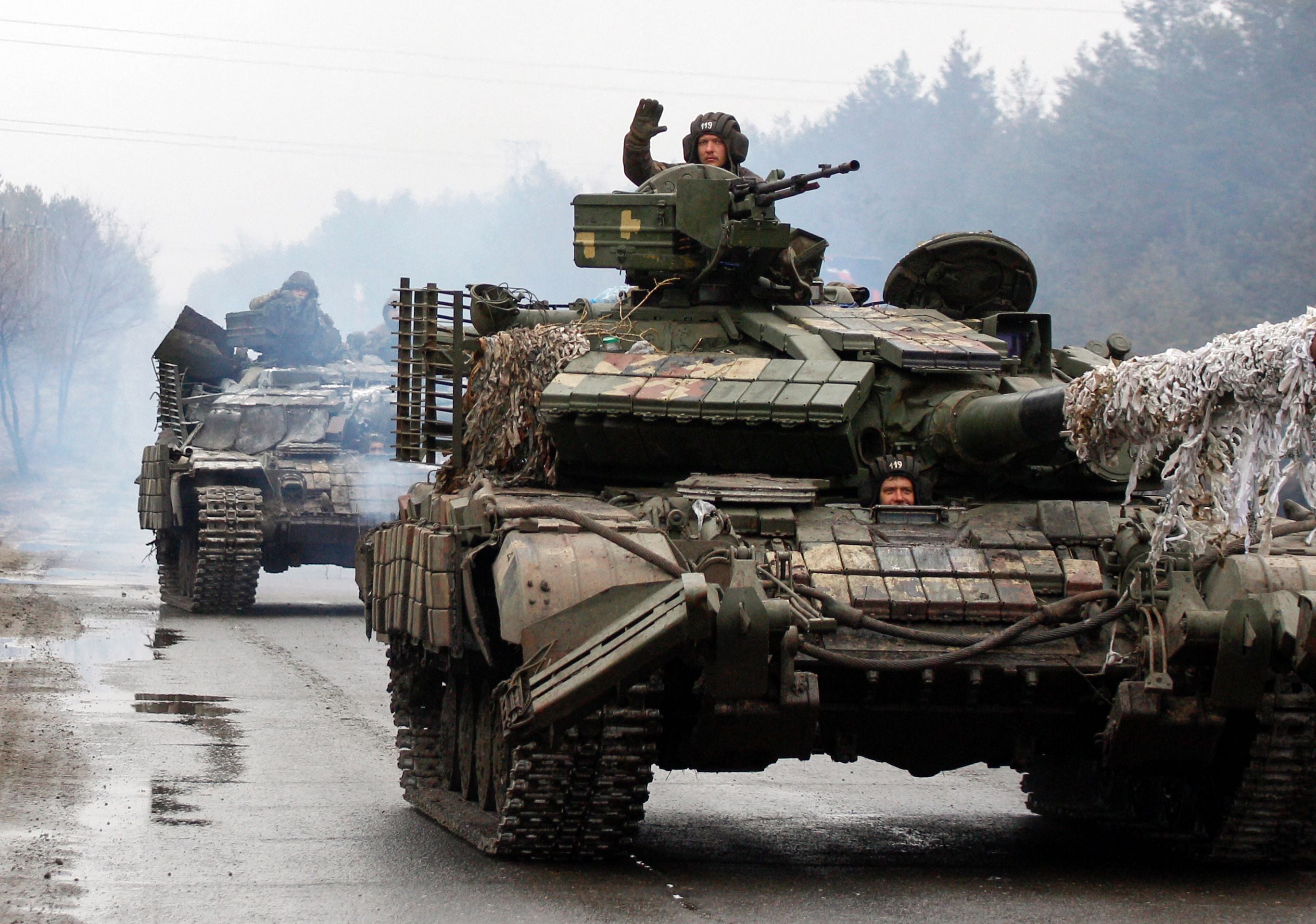
He did not say how many troops would be deployed, but confirmed that the move would involve land, sea and air power.
The NRF can number up to 40,000 troops, but Stoltenberg said that NATO would not be deploying the entire force. Parts of a force known in NATO jargon as the Very High Readiness Joint Task Force (VJTF), which is currently led by France, will also be sent.
“We are now deploying the NATO Response Force for the first time in a collective defense context. We speak about thousands of troops. We speak about air and maritime capabilities,” Stoletenberg said.
The world’s biggest security organization previously had around 5,000 troops stationed in the
countries — Estonia, Latvia and Lithuania — and Poland, but has significantly beefed up its defenses over the past three months.
“Russia has shattered peace on the European continent. What we have warned against for months has come to pass despite all of our efforts to find a diplomatic solution,” Stoltenberg said as he opened the summit.
“Moscow bears sole responsibility for the deliberate, cold-blooded and long-planned invasion,” he added. Ahead of the summit, Stoltenberg had vowed that the 30-nation military organization would “defend every ally against any attack on every inch of NATO territory.”
Some of NATO’s 30 member countries are supplying arms, ammunition and other equipment to Ukraine, but NATO as an organization isn’t. It won’t launch any military action in support of Ukraine, which is a close partner but has no prospect of joining.
The Baltic members, however, have said the West should “urgently provide Ukrainian people with weapons, ammunition and any other kind of military support to defend itself as well as economic, financial and political assistance and support, humanitarian aid.”
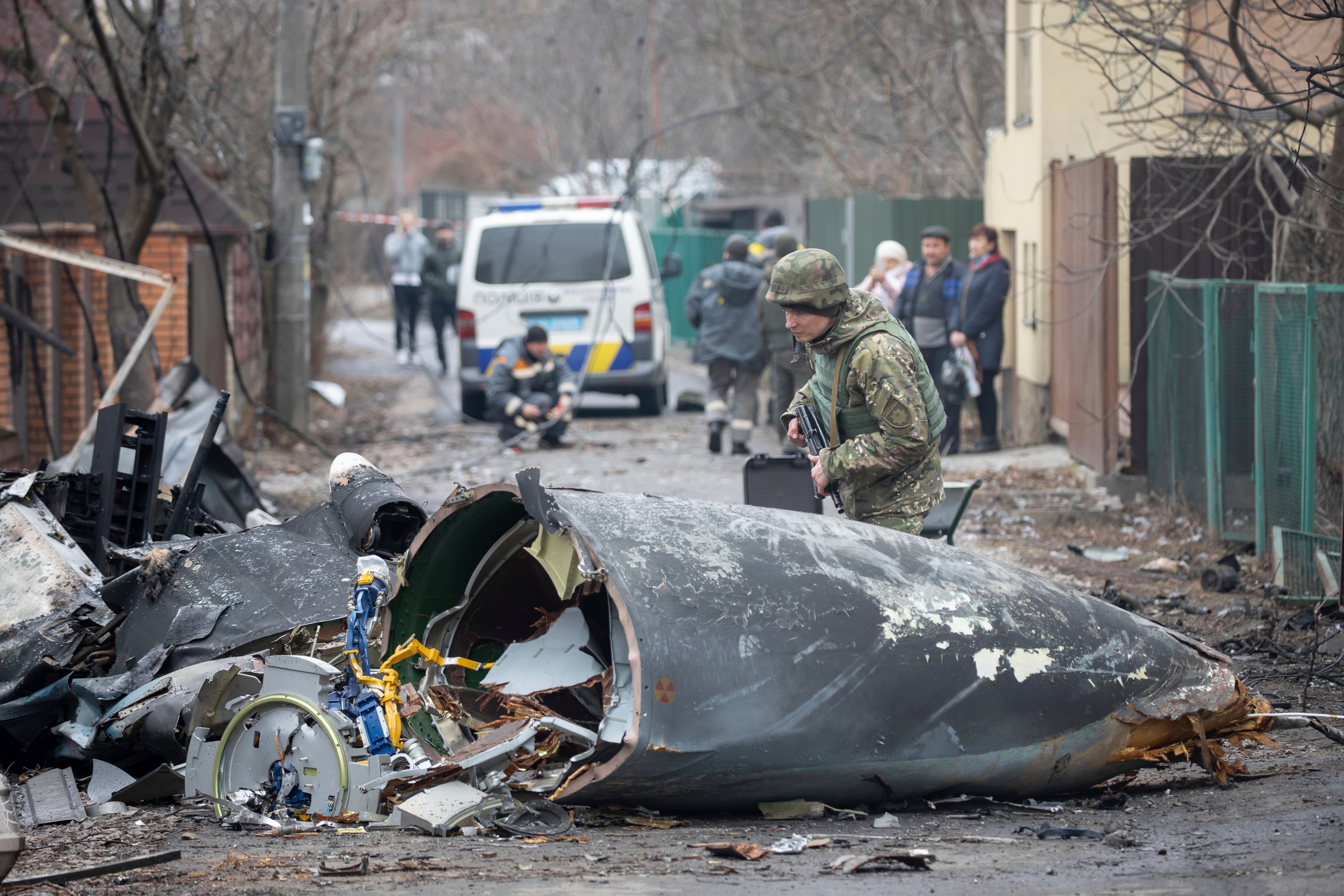
NATO began beefing up its defenses in northeastern Europe after Russia annexed Ukraine’s Crimean Peninsula in 2014. Recently, some members have also sent troops, aircraft and warships to the Black Sea region, near allies Bulgaria, Romania and Turkey.
Short-term, NATO has activated an emergency planning system to allow commanders to move forces more quickly. The Pentagon said Thursday that it is sending 7,000 troops to Europe in addition to 5,000 recently deployed personnel.
NATO surveillance aircraft have begun patrols inside allied territory. The planes would be able to watch Russian fighter jet and transport movements inside Ukraine, much as they monitored aircraft in Syria from Turkey’s airspace.
Lithuania declared a state of emergency Thursday. Lithuania borders Russia’s Kaliningrad region to the southwest, Belarus to the east, Latvia to the north and Poland to the south.
The Baltic country’s move allows for a more flexible use of state reserve funds and increased border protection, giving border guards greater authorities to stop and search individuals and vehicles in border areas.
“We cannot take the luxury to be (a) discussion club,” Lithuanian President Gitanas Nauseda said overnight at an emergency summit of European Union leaders held to impose a “heavy price” on Russia through sanctions. “We need to take action.”
Fears of wider war in Europe as death toll mounts in Russian attack on Ukraine
Russian troops bore down on Ukraine’s capital Friday, with gunfire and explosions resonating ever closer to the government quarter, in an invasion of a democratic country that has fueled fears of wider war in Europe and triggered worldwide efforts to make Russia stop.
With reports of hundreds of casualties from the warfare — including shelling that sliced through a Kyiv apartment building and pummeled bridges and schools — there also were growing signs that Vladimir Putin’s Russia may be seeking to overthrow Ukraine’s government. It would be his boldest effort yet to redraw the world map and revive Moscow’s Cold War-era influence.
In the fog of war, it was unclear how much of Ukraine remains under Ukrainian control and how much or little Russian forces have seized. The Kremlin accepted Kyiv’s offer to hold talks, but it appeared to be an effort to squeeze concessions out of Ukraine’s embattled president instead of a gesture toward a diplomatic solution.
The U.S. and other global powers slapped ever-tougher sanctions on Russia as the invasion reverberated through the world’s economy and energy supplies, threatening to further hit ordinary households. U.N. officials said millions could flee Ukraine. Sports leagues moved to punish Russia on global playing fields. And U.S. President Joe Biden and other NATO leaders held an urgent meeting to discuss how far they can challenge Putin without engaging Russian forces in direct war.
Day 2 of Russia’s invasion, the largest ground war in Europe since World War II, focused on the Ukrainian capital, where Associated Press reporters heard explosions starting before dawn and gunfire was reported in several areas.
Russia’s military said it had seized a strategic airport outside Kyiv, allowing it to quickly build up forces to take the capital. It claimed to have already cut the city off from the west — the direction taken by many of those escaping the invasion, leading to lines of cars snaking toward the Polish border.
Intense gunfire broke out on a bridge across the Dneiper River dividing eastern and western Kyiv, with about 200 Ukrainian forces taking defensive positions and sheltering behind their armored vehicles and under the bridge. Another key bridge leading to the capital was blown away, with smoke rising from it.
Ukrainian officials reported at least 137 deaths on their side and claimed hundreds on the Russian one. Russian authorities released no casualty figures, and it was not possible to verify the tolls.
U.N. officials reported 25 civilian deaths, mostly from shelling and airstrikes, and said that 100,000 people were believed to have left their homes, estimating up to 4 million could flee if the fighting escalates.
“When bombs fall on Kyiv, it happens in Europe, not just in Ukraine,” Ukrainian President Volodymyr Zelenskyy said. “When missiles kill our people, they kill all Europeans.”
A U.S. defense official said a Russian amphibious assault was underway, and thousands of Russian naval infantry were moving ashore from the Sea of Azov, west of Mariupol. The official said Ukrainian air defenses have been degraded but are still operating, and that about a third of the combat power that Russia had massed around Ukraine is now in the country. All told, the official estimated Russia had fired more than 200 missiles into Ukraine, with some hitting residential areas.
Britain’s defense ministry said the bulk of Russian forces advancing on Kyiv were still more than 50 kilometers (31 miles) from the city center, with sporadic clashes in the capital’s northern suburbs.
Zelenskyy pleaded with Western powers to act faster to cut off Russia’s economy and provide Ukraine military help. His whereabouts were kept secret, after he told European leaders in a call Thursday night that he was Russia’s No. 1 target — and that they might not see him again alive.
Russians ‘lost a little bit of their momentum’ against stiff Ukrainian resistance: US official

Though the Russian onslaught in Ukraine continues, their momentum has slowed against stiff Ukrainian resistance, a senior defense official told reporters Friday morning.
“Based on all the things that we’ve talked about, and what we’ve seen over the last 24 hours, we do assess that there is greater resistance by the Ukrainians than the Russians expected,” the official said, speaking on the condition of anonymity. “I’m not able to quantify that resistance for you. I’m just telling you what we’re seeing.”
While missiles continue to rain down on Kyiv and other cities — about 200 total since the attack began — “the Russians have lost a little bit of their momentum,” the official said. “They are not advancing as far or as fast as we believe they expected they would do that. A good indicator of that is no population centers have been taken, none.”
Ukraine forces have also maintained some air defense capabilities, the official said.
“We also assess Russia has yet to achieve air superiority over Ukraine,” he said. “Ukrainian air and missile defense systems are still working, though they were degraded.”
The Russians appear to be mostly targeting military and infrastructure, the official said.
“The bulk of the targets, continue to be military related,” the official said. “They are targeting Ukrainian defensive capabilities, targeting their their supply and logistics capability, their air and missile defense, included trying to hit aircraft on the ground.”
The U.S. military is also seeing “indications now that amphibious assault is underway to the west on the Sea of Azov. To the west of Mariupol. Indications are right now that the that they are putting potentially thousands of naval infantry ashore there.”
On reports about Ukrainian troops telling Russians to “go fuck yourself” before being wiped out, the official said he was not in the position to dispute it and called it “gut-wrenching and inspiring.”
RELATED
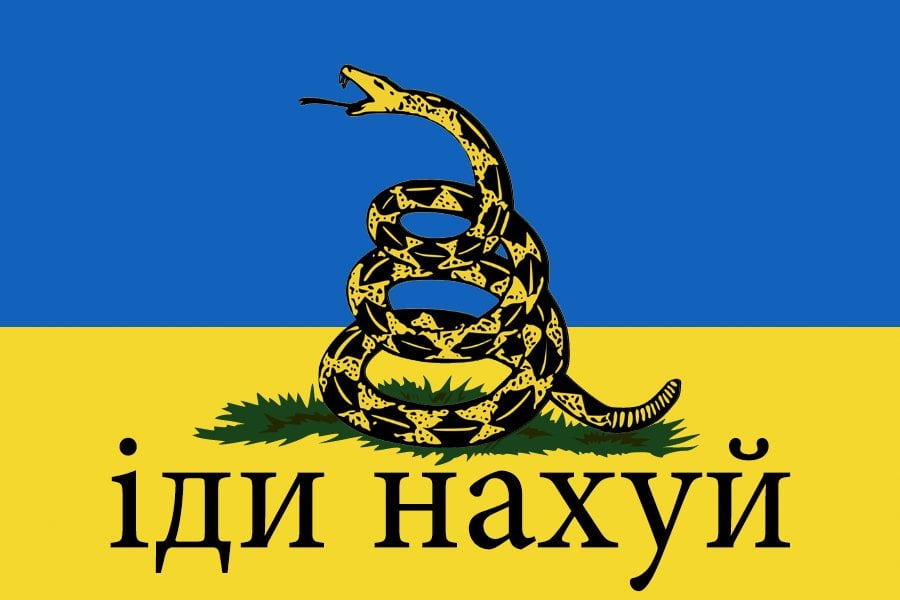
“I would say that from our perspective, it’s both gut wrenching and inspiring and certainly reflective of what we have seen in the last 24 hours. Which is Ukrainians getting on to fight for the country and do so bravely.”
Ukrainians flee war, seeking safety across western borders
Thousands of Ukrainians crossed into neighboring countries to the west in search of safety as Russia pounded their capital and other cities with airstrikes for a second day.
Most of those arriving on Friday were women, children and the elderly after Ukraine’s President Volodymyr Zelenskyy on Thursday banned men of military age from leaving the country.
A woman from the Ukrainian capital, Kyiv, who arrived in Przemsyl, Poland, broke down in tears describing how men were pulled off trains in Ukraine before they got to the border.
“Even if the man was traveling with his own child he couldn’t cross the border, even with a kid,” said the woman, who would only give her first name, Daria.
Cars were backed up for several kilometers (miles) at some border crossings as authorities in Poland, Slovakia, Hungary, Romania and Moldova mobilized to receive them, providing shelter, food and legal help. These countries also eased their usual border procedures, among them COVID-19 testing requirements.
At border crossings in Poland, Ukrainians arrived on foot and by car and train — many with their pets — and were greeted by Polish authorities and volunteers offering them food and hot drinks.
Some sought to join relatives who have already settled in Poland and other EU nations, whose strong economies have for many years attracted Ukrainian workers.
Marika Sipos fled Koson, a village in western Ukraine close to the Hungarian border, arriving early Friday in Lonya, Hungary.
“We had to leave behind everything, our whole life’s work,” Sipon said, describing it as a “terrible feeling.”
Russia considering Zelenskyy push for diplomatic end to Russian attack
Invading Russian forces closed in on the Ukrainian capital Friday, in what appears to be an encircling movement after a barrage of airstrikes on cities and military bases around the country.
The advance on Kyiv is seen as an attempt to replace Ukrainian President Volodymyr Zelenskyy with a Kremlin-friendly regime.
Pre-dawn explosions rocked Kyiv and gunfire was reported in parts of the city, while Ukraine’s military said a group of Russian spies and saboteurs was seen on the capital’s outskirts. Police told people not to exit a central subway station because of gunfire in the area.
The assault, anticipated for weeks by the West, amounts to Europe’s largest ground conflict since World War II. It could also portend the emergence of a new “Iron Curtain” between the West and Russia, with global repercussions.
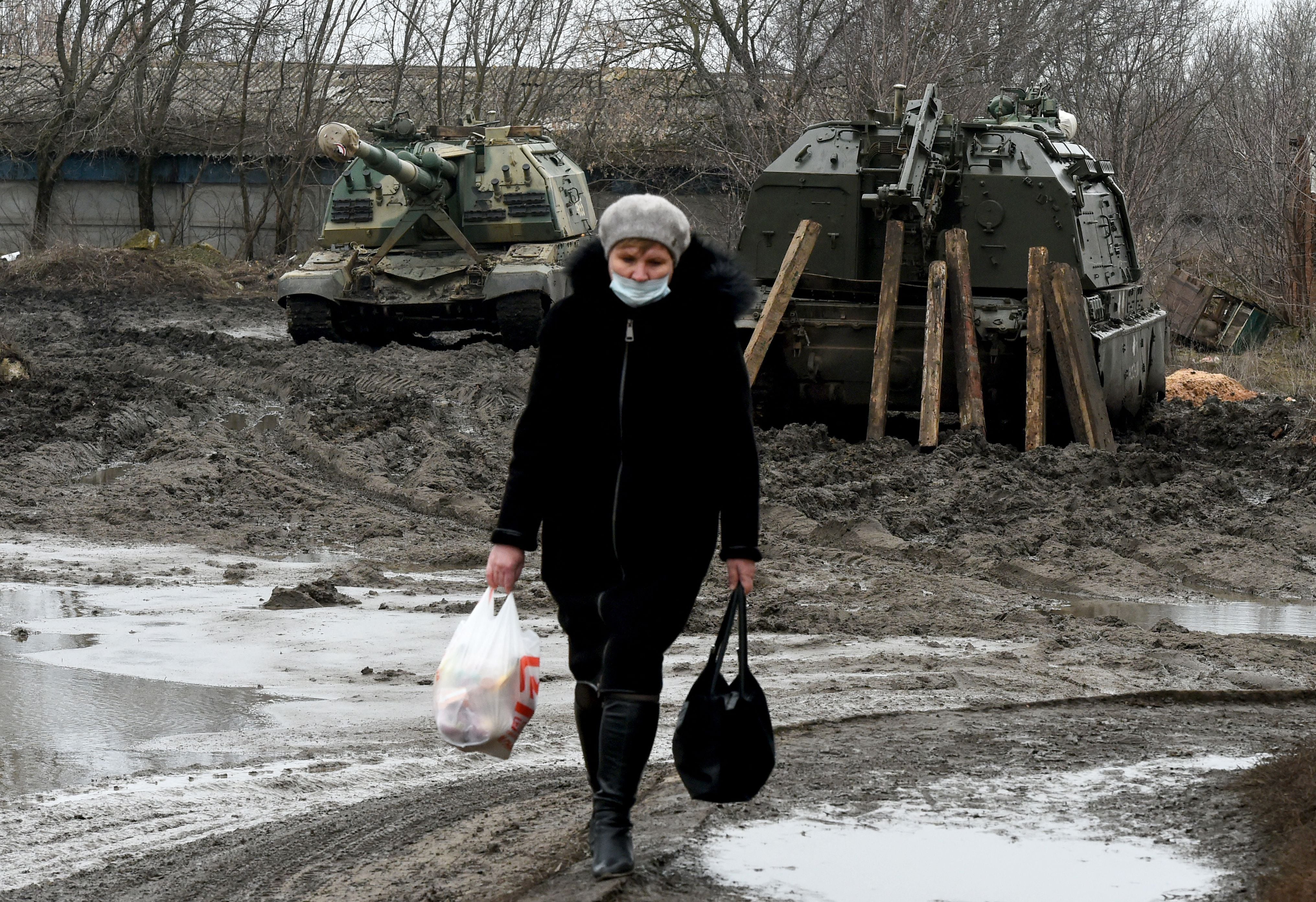
Zelenskyy appealed for defense assistance and tougher sanctions on Russia. U.S. President Joe Biden was to meet Friday with fellow NATO leaders in a virtual summit on Ukraine.
Here are the things to know about the conflict and the security crisis in former Soviet-dominated Eastern Europe:
The Ukrainian president made another push for a diplomatic end to the fighting by offering to discuss with Russia the possibility of designating Ukraine a non-aligned country.
The Kremlin said it would analyze the offer even as Russian troops continued their offensive on Kyiv. Western nations had rejected Moscow’s demand for a halt to Ukraine’s bid to join NATO over fears that the alliance would pose a risk to Russia’s security. It was that rejection that Russian President Vladimir Putin used to justify the invasion, claiming that the West left him no other choice.
Kremlin spokesman Dmitry Peskov described Zelenskyy’s offer as “a move in a positive direction” which the Russian government had taken note of and now needed to “analyze.”
But Russian Foreign Minister Sergey Lavrov said Zelenskyy “is simply lying” about his offer because he “missed the opportunity” to discuss Ukraine’s neutral status when Putin proposed it earlier.
‘I don’t want to die’
Yurii Zhyhanov woke to his mother’s screaming and found himself covered in dust. Before dawn on the second day of Russia’s invasion, their residential building had been struck by shelling on the outskirts of Ukraine’s capital, Kyiv.
He and other civilians were horrified to find their lives at risk, and many have begun to flee. Amid the smoke and the wailing of car alarms, Zhyhanov and his family packed and joined them.
“What are you doing? What is this?” he said, addressing Russia and gesturing to the damaged building behind him. “If you want to attack military personnel, attack military personnel. This is all I can say.”
His weariness and shock reflected that of his country on Friday as people climbed out of bomb shelters, basements and subways to face another day of upheaval.
Those who didn’t wake to explosions were roused by another day of air raid sirens. Then came the news that Russian forces had advanced to the outskirts of the capital.
Russia has said it is not targeting cities, but the fighting seemed far too close.
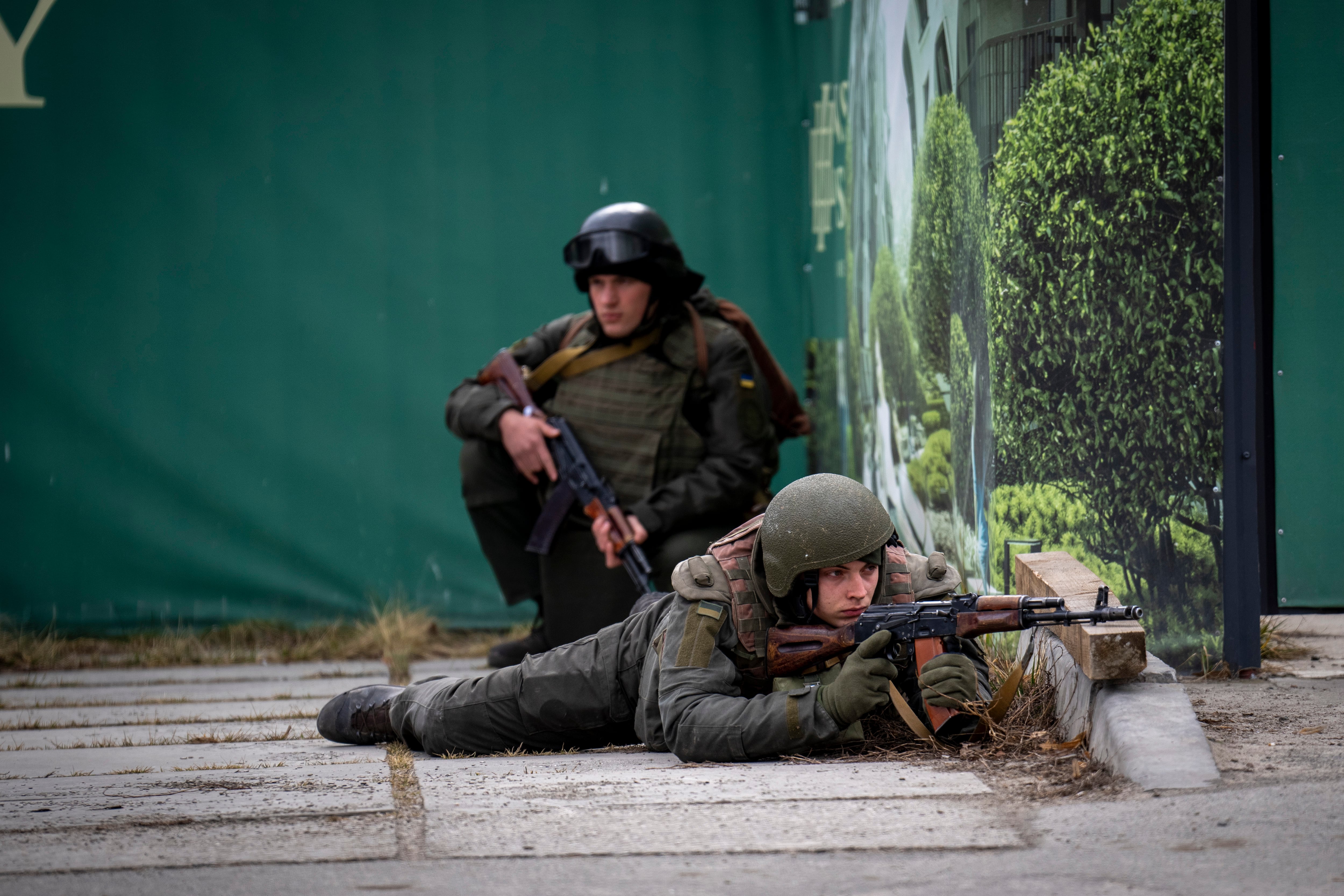
The body of a dead soldier lay on the ground near a Kyiv underpass. Elsewhere, fragments of a downed aircraft smoked amid the brick homes of a residential area. Black plastic was draped over body parts found beside them.
Armored personnel carriers drove down the city’s streets. Residents stood uneasily in doorways of apartment buildings, watching.
In the port city of Mariupol, a young girl named Vlada was new to war and already wished for it to stop.
“I don’t want to die,” she said. “I want all of this to end as soon as possible.”
Ukrainians picked through the damage left by shelling. And some mourned.
In the city of Horlivka, a body covered with a blanket lay on the ground outside a house that had been hit by shelling. A man standing nearby spoke on the phone.
“Yes, Mom’s gone, that’s all,” he said. “That’s it, Mom’s gone.”
The urge to run away grew. In a train station just across the border in Poland, hundreds of people from Ukraine sought shelter. Some curled up on cots, trying to sleep. A woman stroked the hair of a young girl.
One of those at the station was Andry Borysov, who said he had heard the rush of something flying overhead and then an explosion as he hurried to catch a train out of Kyiv.
“It was an unmistakable sound,” he said.
Others hesitated to leave Ukraine, even as they stood on railway platforms.
In Kostiantynivka, a government-controlled area in the separatist-held Donetsk People’s Republic, a woman who gave only her first name, Yelena, was among those who appeared undecided.
“It’s fifty-fifty on whether it is worth leaving or not,” she said. “But it wouldn’t hurt to leave for a couple days, for a weekend.”
Others leaving Ukraine knew it might take much longer before they can come home.
‘The hardest day will be today’
The Ukrainian military is reporting significant fighting northwest of the nation’s capital as Russian forces apparently try to advance on Kyiv from the north.
The military said Friday morning a bridge across a river had been destroyed in the area of Ivankiv, about 60 kilometers (40 miles) northwest of Kyiv.
“The hardest day will be today. The enemy’s plan is to break through with tank columns from the side of Ivankiv and Chernihiv to Kyiv. Russian tanks burn perfectly when hit by our ATGMs (anti-tank guided missiles),” Interior Ministry adviser Anton Gerashchenko said on Telegram.
Explosions were heard in the Ukrainian capital of Kyiv early Friday as Russian forces pressed on with a full-scale invasion that resulted in the deaths of more than 100 Ukrainians in the first full day of fighting and could eventually rewrite the global post-Cold War security order.
As Russian troops continued pressing their offensive Friday, intense fighting also raged in the country’s east.
Russian troops entered the city of Sumy near the border with Russia that sits on a highway leading to Kyiv from the east. The regional governor, Dmytro Zhivitsky, said Ukrainian forces fought Russian troops in the city overnight, but other Russian convoys kept rolling west toward the Ukrainian capital.
“Military vehicles from Sumy are moving toward Kyiv,” Zhivitsky said. “Much equipment has passed through and is heading directly to the west.”
Zhivitsky added that another northeastern city, Konotop, was also sieged. He urged residents of the region to fight the Russian forces.
After using airstrikes on cities and military bases, Russian military units moved swiftly to take on Ukraine’s seat of government and its largest city in what U.S. officials suspect is a brazen attempt by Russian President Vladimir Putin to dismantle the government and replace it with his own regime.
Ukrainian leaders pleaded for help as civilians piled into trains and cars to flee, and hotels in Kyiv were being evacuated amid early indications of an assault.
President Volodymyr Zelenskyy said the government had information that “subversive groups” were encroaching on the Ukrainian capital city of Kyiv, and U.S. Secretary of State Antony Blinken said the city “could well be under siege.”
Ukrainian forces braced for more attacks after enduring a Russian barrage of land- and sea-based missiles, an assault that one senior U.S. defense official described as the first salvo in a likely multi-phase invasion aimed at seizing key population centers and “decapitating” Ukraine’s government.
The chief of the NATO alliance, Jens Stoltenberg, said the “brutal act of war” shattered peace in Europe, joining a chorus of world leaders decrying an attack that could cause massive casualties and topple Ukraine’s democratically elected government.
“Russia has embarked on a path of evil, but Ukraine is defending itself and won’t give up its freedom,” Zelenskyy tweeted. His grasp on power increasingly tenuous, he pleaded Thursday for even more severe sanctions than the ones imposed by Western allies and ordered a full military mobilization that would last 90 days.
Ukrainian president reports casualties
Ukrainian President Volodymyr Zelenskyy says 137 civilians and military personnel have been killed so far in the Russian invasion of his country.
He calls them “heroes” in a video address released early Friday in which he also says hundreds more have been wounded.
Zelenskyy says that despite Russia’s claim it is attacking only military targets, civilian sites also have been struck. In his words: “They’re killing people and turning peaceful cities into military targets. It’s foul and will never be forgiven.”
The president says all border guards on Zmiinyi island in the Odesa region were killed Thursday. Ukraine’s border guard service earlier in the day reported that the island was taken by the Russians.
Zelenskyy is ordering a full military mobilization to challenge the Russian invasion. He issued a decree Thursday evening saying the mobilization would last 90 days.
He ordered the military’s General Staff to determine the number of those liable for service and reservists as well as the order of the call-up.
Zelensky gave his Cabinet the job of allocating funds to pay for the mobilization.
The Battle for Chernobyl
It was among the most worrying developments on an already shocking day, as Russia invaded Ukraine on Thursday: warfare at the Chernobyl nuclear plant, where radioactivity is still leaking from history’s worst nuclear disaster 36 years ago.
Russian forces took control over the site after a fierce battle with Ukrainian national guards protecting the decommissioned plant, Ukrainian presidential adviser Mykhailo Podolyak told The Associated Press. The condition of the plant’s facilities, a confinement shelter and a repository for nuclear waste is unknown, he said.
Alyona Shevtsova, adviser to the commander of Ukraine’s ground forces, wrote on Facebook that staff members at the Chernobyl plant had been “taken hostage.” The White House said it was “outraged” by reports of the detentions.
The Ukrainian Ministry of Defense issued an update saying that though the plant was “likely captured,” the country’s forces had halted Russia’s advance toward Chernihiv and that it was unlikely that Russia had achieved its planned Day One military objectives.
An official familiar with current assessments said Russian shelling hit a radioactive waste repository at Chernobyl, and an increase in radiation levels was reported. The increase could not be immediately corroborated.
A senior American intelligence official said the U.S. believes Russian forces at Chernobyl were aiming to push to Kyiv, about 130 kilometers (80 miles) south of the plant, to try to link with other Russian forces throughout Ukraine. The officials were not authorized to be publicly named discussing the sensitive matter.
The White House is expressing outrage, with press secretary Jen Psaki calling it “incredibly alarming and greatly concerning” because it could hamper efforts to maintain nuclear facility.
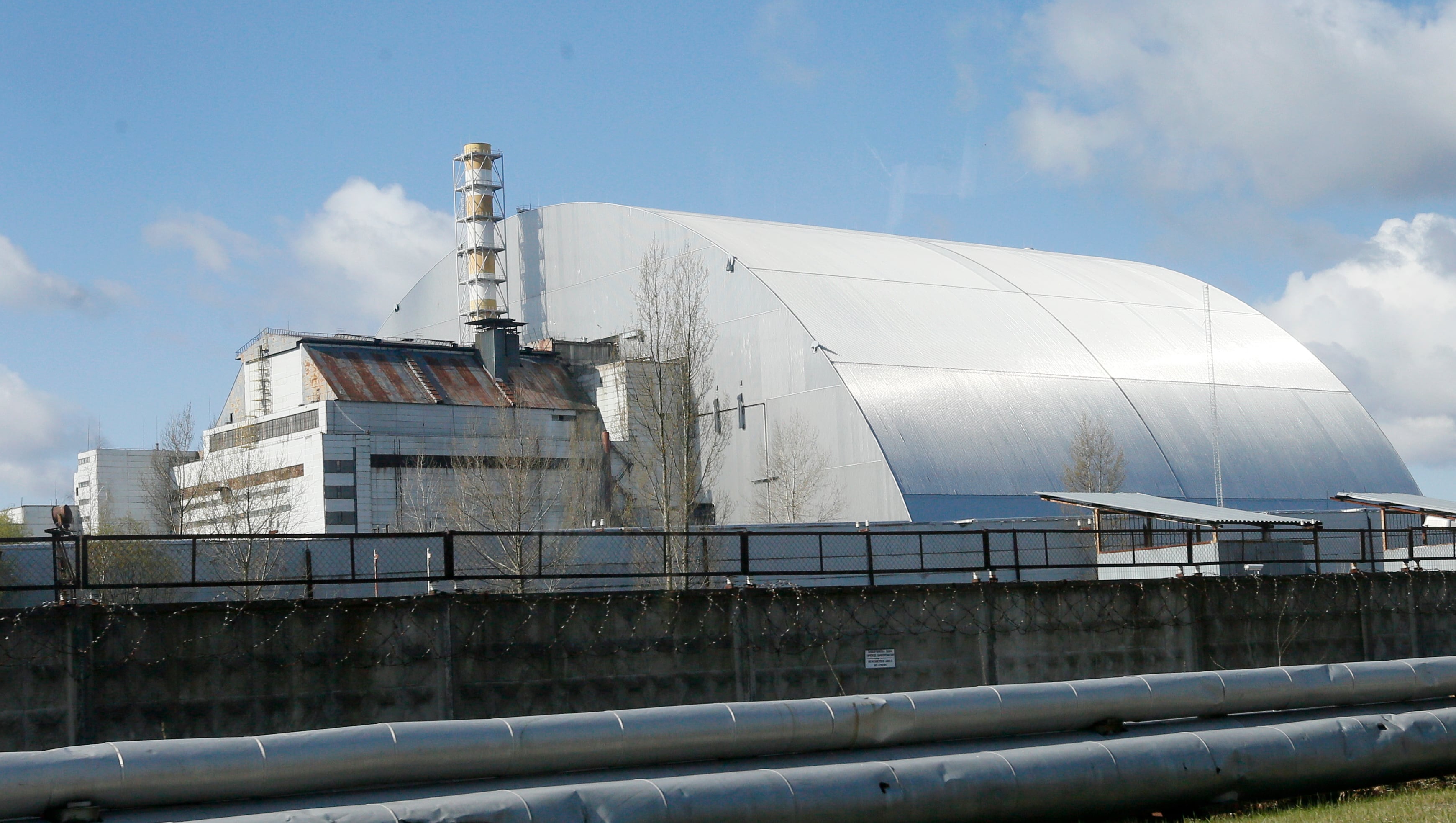
The Chernobyl Exclusion Zone, a 2,600-square-kilometer (1,000-square-mile) zone of forest surrounding the shuttered plant, lies between the Belarus-Ukraine border and the Ukrainian capital.
Ukrainian President Volodymyr Zelenskyy said Ukrainian officers fought to defend it, “so that the tragedy of 1986 will not be repeated.” He called it a “declaration of war against the whole of Europe.”
Adviser Podolyak said that after an “absolutely senseless attack ... it is impossible to say that the Chernobyl nuclear power plant is safe.” He warned that Russian authorities could blame Ukraine for damage to the site or stage provocations from there.
Ukrainian Interior Ministry adviser Anton Herashenko warned that any attack on the waste repository could send radioactive dust over “the territory of Ukraine, Belarus and countries of the EU.”
Russian officials, who have revealed little of their operations in Ukraine and not revealed their goals, did not publicly comment on the battle.
The International Atomic Energy Agency said it is following the situation in Ukraine “with grave concern” and appealed for maximum restraint to avoid any action that may put Ukraine’s nuclear facilities at risk.
Rafael Mariano Grossi, the IAEA’s general director, said Ukraine has informed the Vienna-based agency that “unidentified armed forces” have taken control of all facilities at the plant and that there had been no casualties or destruction at the industrial site. Grossi said it is “of vital importance that the safe and secure operations of the nuclear facilities in that zone should not be affected or disrupted in any way.’’
Edwin Lyman, director of nuclear power safety at the Union of Concerned Scientists in Washington, said, “I can’t imagine how it would be in Russia’s interest to allow any facilities at Chernobyl to be damaged.”
In an interview, Lyman said he is most worried about spent fuel stored at the site, which has not been active since 2000. If the power to cooling pumps is disrupted or fuel-storage tanks are damaged, the results could be catastrophic, he said.
Reactor No. 4 at the power plant exploded and caught fire deep in the night on April 26, 1986, shattering the building and spewing radioactive material high into the sky.
Soviet authorities made the catastrophe even worse by failing to tell the public what had happened, angering European governments and the Soviet people. The 2 million residents of Kyiv weren’t informed despite the fallout danger, and the world learned of the disaster only after heightened radiation was detected in Sweden.
The building containing the exploded reactor was covered in 2017 by an enormous shelter aimed at containing radiation still leaking from the accident. Robots inside the shelter work to dismantle the destroyed reactor and gather up the radioactive waste.
It’s expected to take until 2064 to finish dismantling the reactors. Ukraine decided to use the deserted zone as the site for its centralized storage facility for spent fuel from the country’s other remaining nuclear power plants.
Germany’s vice chancellor and economy minister, Robert Habeck, told The Associated Press that Russia would not need to obtain nuclear material from Chernobyl if it wanted to use it for any purpose, because it has enough such material of its own.
President Joe Biden on Thursday condemned Russia’s military assault on Ukraine as “a flagrant violation of international law” and vowed further punishment for the aggressors in the days and weeks to come.
That will include sending more U.S. troops to Europe, to supplement both American and NATO Forces there.
Biden directed Defense Secretary Lloyd Austin to order the deployment to Europe of approximately 7,000 additional troops, according to the Pentagon.
“This would comprise an armored brigade combat team with associated capabilities and enablers,” a release stated. “They will deploy to Germany to reassure NATO Allies, deter Russian aggression and be prepared to support a range of requirements in the region. We expect them to depart in the coming days.”
The Russian attack on Ukraine was unjustified, Biden said.
“The Russian military has begun a brutal assault on the people of Ukraine without provocation, without justification, without necessity,” Biden said in a national address from the White House Thursday afternoon. “This is a premeditated attack …
“This aggression cannot go unanswered. If it did. the consequences for America would be much worse. America stands up to bullies. We stand up for freedom. This is who we are.”
RELATED

The comments came about 16 hours after Russian military forces began attacking military and strategic civilian sites in Ukraine after Russian President Vladimir Putin declared the military intervention was needed to protect civilians there. Ukrainian officials and other world leaders have dismissed that justification as baseless.
In a separate statement on Thursday, Biden and the other leaders of the G7 countries resolved to “respond swiftly to President Putin’s unprovoked and unjustified attack on Ukraine.” In addition, NATO leaders said they will activate their emergency response force — which includes 8,500 more American servicemembers — in response to the Russian aggression.
Biden on Thursday reiterated that “our forces are not going to Europe to fight in Ukraine, but to defend our NATO allies and reassure those allies.”
But he said that the United States will take other steps to confront Russia (to include new sanctions) and defend Ukraine, to include delivering more defensive military equipment to their fighters.
RELATED
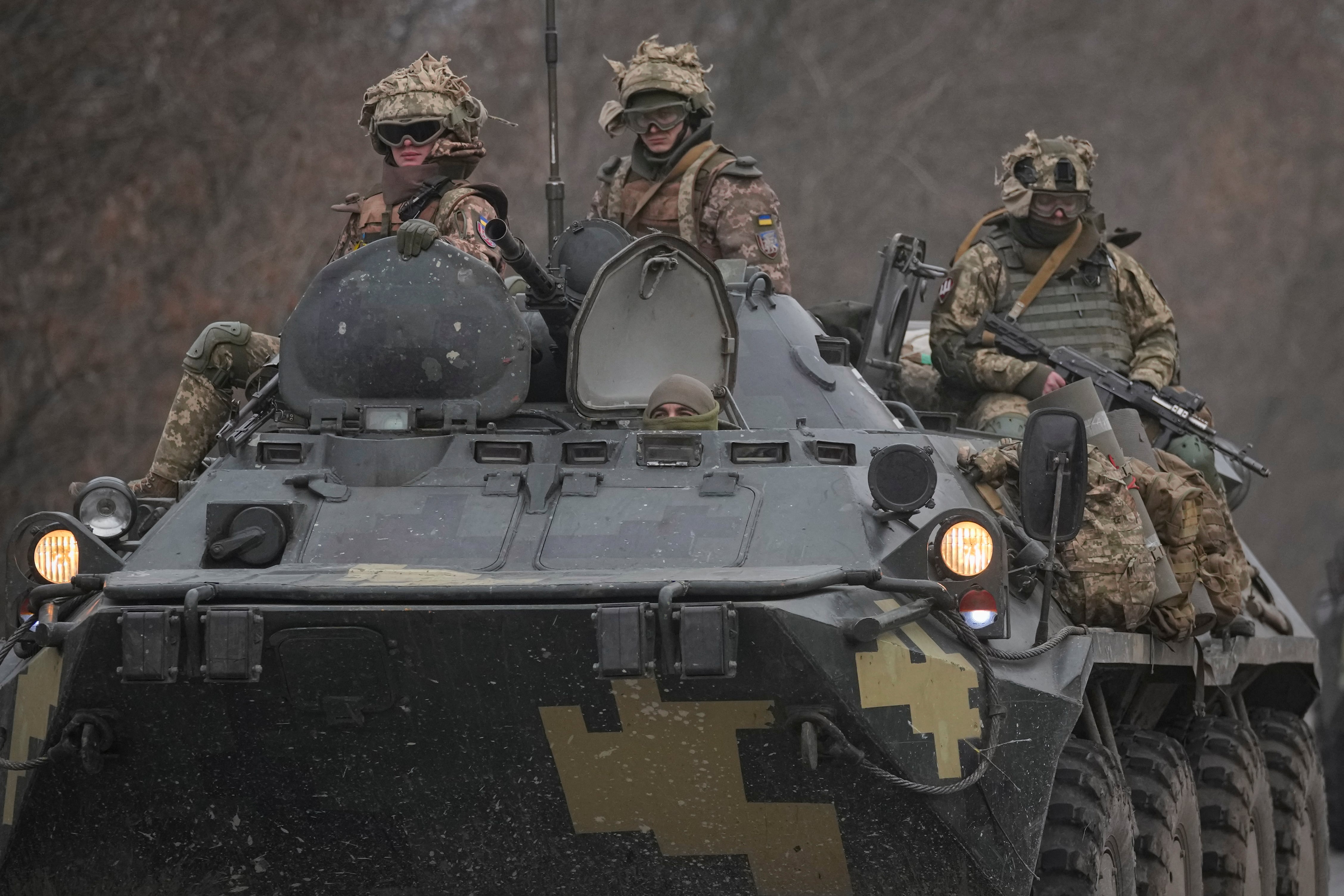
American officials have provided about $650 million worth of defensive equipment in recent weeks, including anti-tank missiles that have already been used by the Ukrainian forces to slow the invading Russians.
Asked what Putin’s goals are in the region, Biden said that he believes the Russian leader “wants to re-establish the former Soviet Union,” an ambition that “is completely contrary to the place where the rest of the world has arrived.”
Biden said whether the world is headed towards another Cold War — the decades-long standoff between the United States and the Soviet Union — depends on Russia’s next actions.
“The rest of the world is in total opposition to what he’s doing, from Asia to South America to Europe and around the world,” he said. “It’s going to be a cold day for Russia.”
Officials say Ukraine no longer in control of Chernobyl site
Earlier on Thursday, a Ukrainian presidential adviser said the country had lost control of the Chernobyl nuclear site after Ukranian forces waged a fierce battle with Russian troops.
Adviser Myhailo Podolyak told The Associated Press that Ukrainian authorities did not know the current condition of the facilities at Chernobyl, the site of the world’s worst nuclear disaster.
“After the absolutely senseless attack of the Russians in this direction, it is impossible to say that the Chernobyl nuclear power plant is safe,” he said.
Ukrainian President Volodymyr Zelenskyy had announced several hours earlier Thursday that Russian forces were trying to seize the Chernobyl nuclear plant.
A nuclear reactor at the plant 130 kilometers (80 miles) north of Ukraine’s capital, Kyiv, exploded in April 1986, sending a radioactive cloud across Europe.
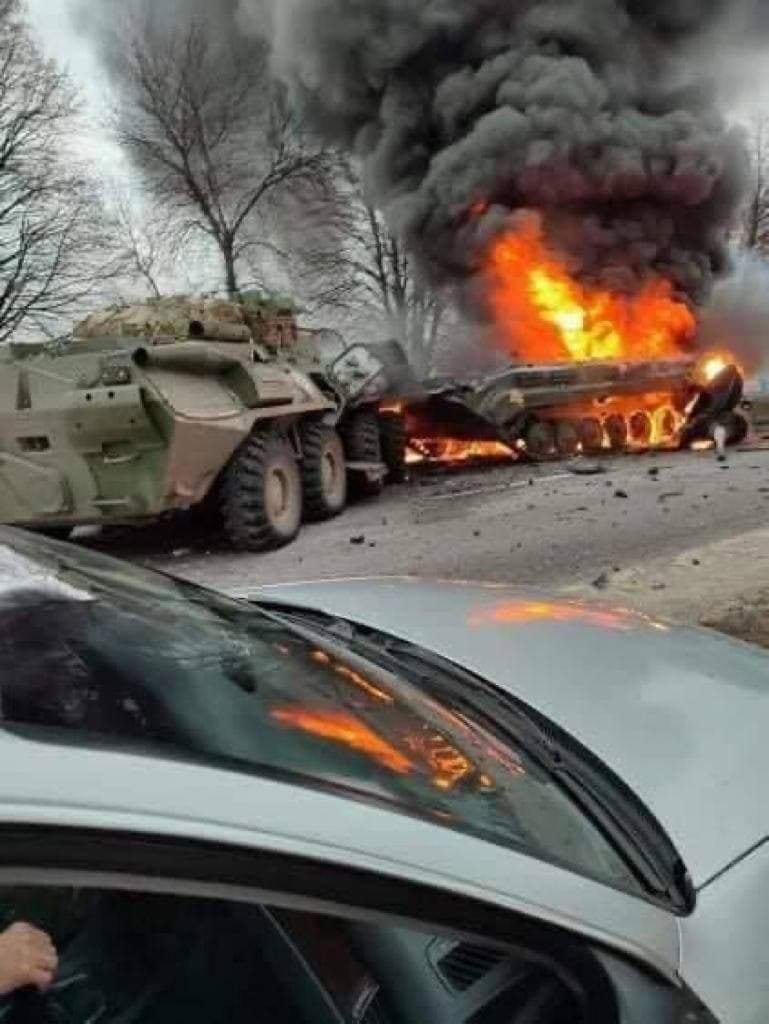
The exploded reactor was covered by a protective shelter several years ago to prevent radiation leaks.
A Ukrainian official said Russian shelling hit a radioactive waste repository and an increase in radiation levels was reported. The official spoke on condition of anonymity to discuss the sensitive matter.
It was not immediately possible for experts to access the repository to assess damage before Russian forces overtook the site.
What we know is happening
Associated Press journalists are documenting military activity across Ukraine, where disinformation is spiking during a Russian ground and air offensive. With social media amplifying a torrent of military claims and counter-claims, determining exactly what is happening can difficult. Here’s a look at some of what can be confirmed.
Activity with direct witnesses:
— Russian military vehicles crossing from Belarus into Ukraine at the Senkovka crossing point in the Chernihiv region
— Russian military vehicles crossing a bridge near Tavriysk and Novaya Kakhovka in the southern Kherson region, and Russian military helicopters flying over the area
— Security camera footage showing Russian military vehicles crossing from Crimea into government-held territory at Armyansk checkpoint
— Explosions around Kyiv, and their aftermath
— Helicopters flying over Kyiv, believed to be Russian
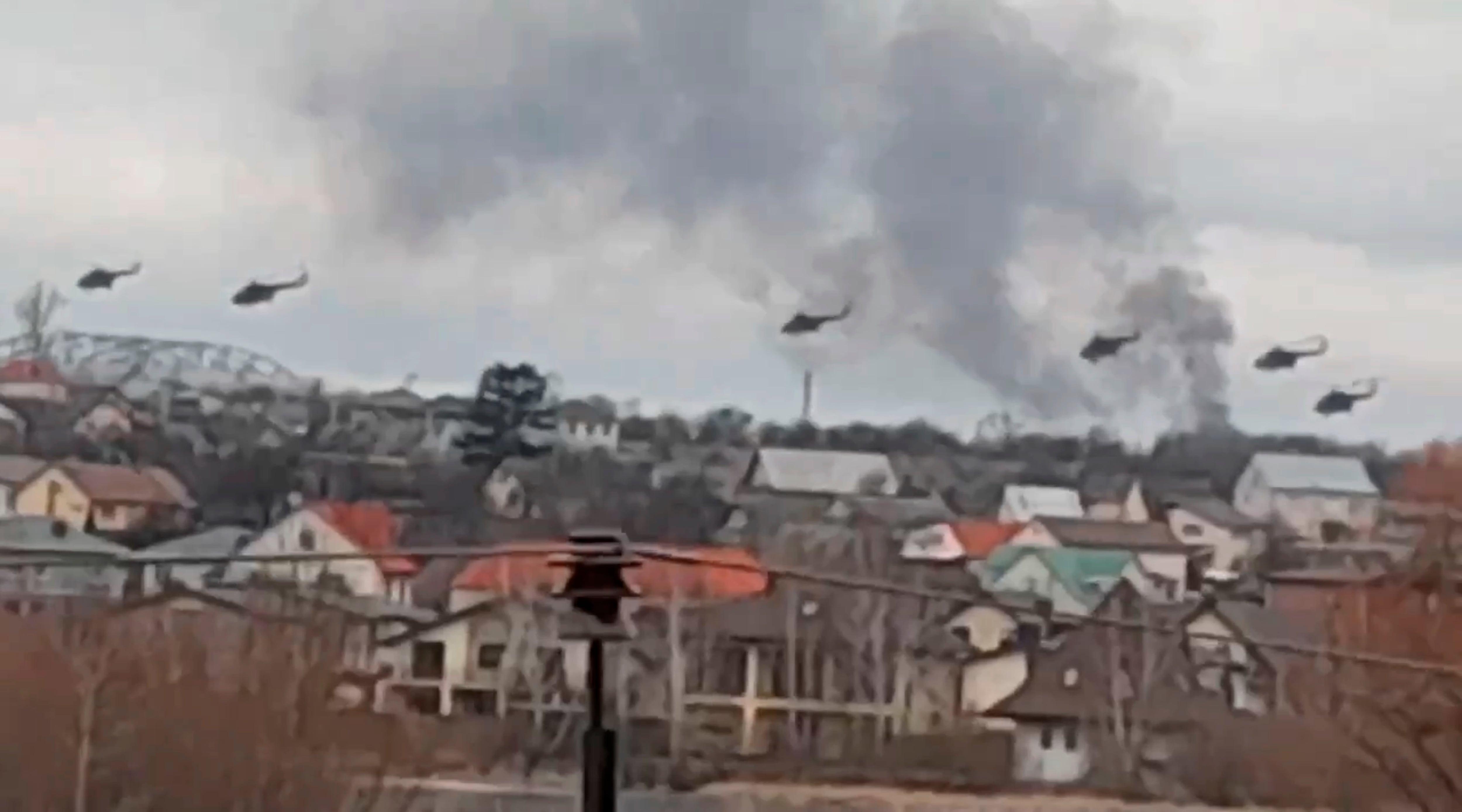
— Fire near the headquarters of the Ukrainian intelligence agency
— Explosions in Dnipro in eastern Ukraine
— Explosions near an airfield and bomb depot in Myrhorod in eastern Ukraine, including sounds of shelling.
— A residential neighborhood shelled in Mariupol, a strategic city on the Azov Sea near Russia’s border. The mayor said three people were killed. An anti-aircraft base was also struck, and the mayor said the airport runway nearby was damaged.
— Fighting in Hostomel, a town 7 kilometers (4 miles) from Kyiv, and home to the Antonov aircraft maker and an airport with a runway long enough to receive all types of aircraft, including the biggest cargo planes
— An exploded shell inside an apartment building in the eastern city of Kharkiv; a resident described the blast and said a neighbor was injured in the leg and taken away by an ambulance
— Just outside the separatist-held areas, in Bakhmut, military officers stationed on the road and crowds lining up at gas stations and banks to prepare to flee
— In Sievierodonetsk, families hiding in a bomb shelter after reports of two explosions
Announced by Ukrainian and Russian authorities:
— Russian forces are moving to seize Chernobyl nuclear plant, site of the world’s worst nuclear accident (Ukrainian president)
— A military plane crashed in the Obukhiv region, about 40 kilometers (25 miles) south of downtown Kyiv. There were 14 people aboard, no determination of casualties. (Ukrainian emergencies ministry)
— The air bombing of an electrical plant in Tripilya, about 40 kms (25 miles) south of Kyiv, in roughly the same area where the Ukrainian military plane was reported to have crashed earlier (Ukrainian president’s office)
— Russian military says it destroyed 74 Ukrainian military facilities, including 11 air bases (Russia’s Defense Ministry)
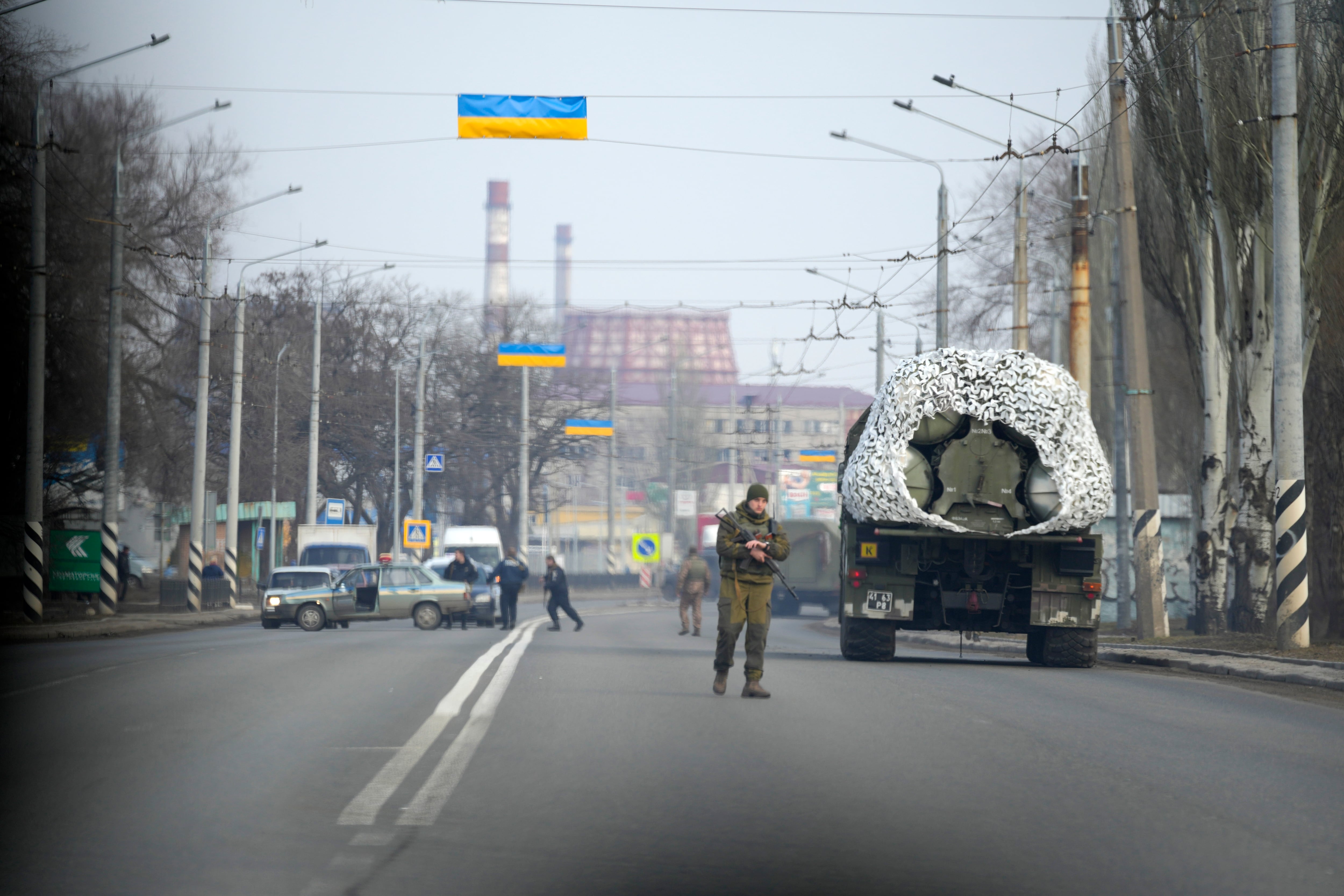
Something else exploded behind him
The missile fragment pierced the ceiling of Mikhail Shcherbakov’s apartment in Kharkiv. In an instant, Ukrainians found that war, after weeks of warnings, had hit home.
“I heard noise and woke up. I realized it sounded like artillery,” Shcherbakov said. He jumped from the couch and ran to wake his mother, and something exploded behind him.
The missile left a nearby computer and teacup shrouded with dust, instant artifacts of Europe’s latest war.
At dawn on Thursday, Ukrainians’ uneasy efforts at normality were shattered. Smoke rose from cities, even well away from the country’s disputed eastern border. A morning commute turned into lines of cars waiting at fuel stations or fleeing from the gray and drizzly capital, Kyiv. People with luggage took shelter in the subway, unsure of where to go.
Some panicked immediately. Others clung to routine, with irritation.“I’m not afraid. I’m going to work. The only unusual thing is that you can’t find a taxi in Kyiv,” one resident complained, even as air raid sirens wailed.
Many seemed unsure of know how to react. Kyiv’s main street, Khreshchatyk, rippled with anxiety as people checked their phones. Some walked their dogs or waved at friends.
“I’m not scared at the moment. Maybe I’ll be scared later,” resident Maxim Prudskoi said.
The hotel where many Associated Press journalists stayed ordered an evacuation within 30 minutes. During the hurried checkout, the friendly desk clerk asked: “Did you have anything from the mini-bar?”
In Mariupol, the Azov Sea port city that many fear will be the first major target because of its strategic importance, AP journalists saw similar confused scenes of routine and fear.
Some residents waited at bus stops, seemingly on their way to work, while others rushed to leave the city that is only about 15 kilometers (less than 10 miles) from the front line with the Donetsk People’s Republic, one of two separatist-held areas recognized by Russian President Vladimir Putin as independent this week in a prelude to the invasion.
As the day progressed, alarm across Ukraine rose. People crowded grocery stores and ATMs, seeking supplies and cash. In Kharkiv, worried residents inspected fragments of military equipment strewn across a children’s playground.
Kyiv Mayor Vitaly Klitschko called on the city’s 3 million people to stay indoors unless they worked in critical sectors and said everyone should prepare go-bags with necessities such as medicine and documents.
For weeks, President Volodymyr Zelenskyy had tried to moderate expectations of aggression by Russia, even as warnings by the United States became more urgent. Zelenskyy argued that panic would lead to societal destabilization that could be as much of a tactical advantage for Russia as the estimated 150,000 troops that had massed on Ukraine’s borders.
On Thursday, as the president imposed martial law, Ukrainians realized with a jolt that everything might change.
“I feel panic, scared and excited. I don’t know who I should ask for help,” said Kyiv resident Elizaveta Melnik.” We didn’t believe this situation would come.”

NATO considers next steps
NATO agreed at emergency talks on Thursday to further beef up its land, sea and air forces on its eastern flank near Ukraine and Russia after President Vladimir Putin ordered a military offensive in Ukraine.
“We are deploying additional defensive land and air forces to the eastern part of the alliance, as well as additional maritime assets,” NATO ambassadors said in a statement. “We have increased the readiness of our forces to respond to all contingencies.”Countries closest to the conflict — Estonia, Latvia, Lithuania and Poland — requested rare consultations under Article 4 of NATO’s founding treaty, which can be launched when “the territorial integrity, political independence or security of any of the (NATO) parties is threatened.”
“We have decided, in line with our defensive planning to protect all allies, to take additional steps to further strengthen deterrence and defense across the Alliance,” the envoys said. “Our measures are and remain preventive, proportionate and non-escalatory.”
RELATED
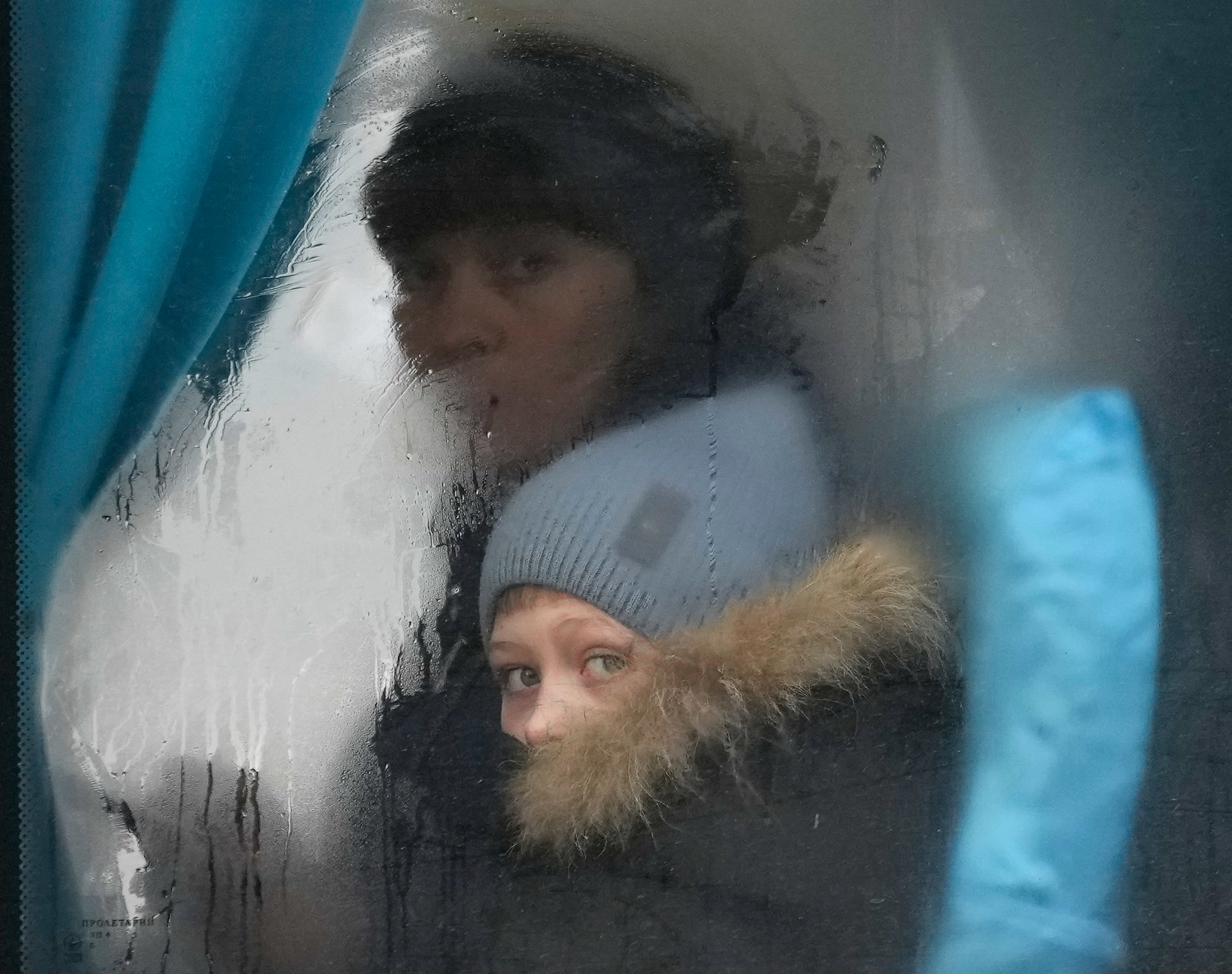
While some of NATO’s 30 member countries are supplying arms, ammunition and other equipment to Ukraine, NATO as an organization isn’t. It won’t launch any military action in support of Ukraine, which is a close partner but has no prospect of joining.
Estonia, Latvia and Lithuania, however, said in a joint-statement: “We would need to urgently provide Ukrainian people with weapons, ammunition and any other kind of military support to defend itself as well as economic, financial and political assistance and support, humanitarian aid.”
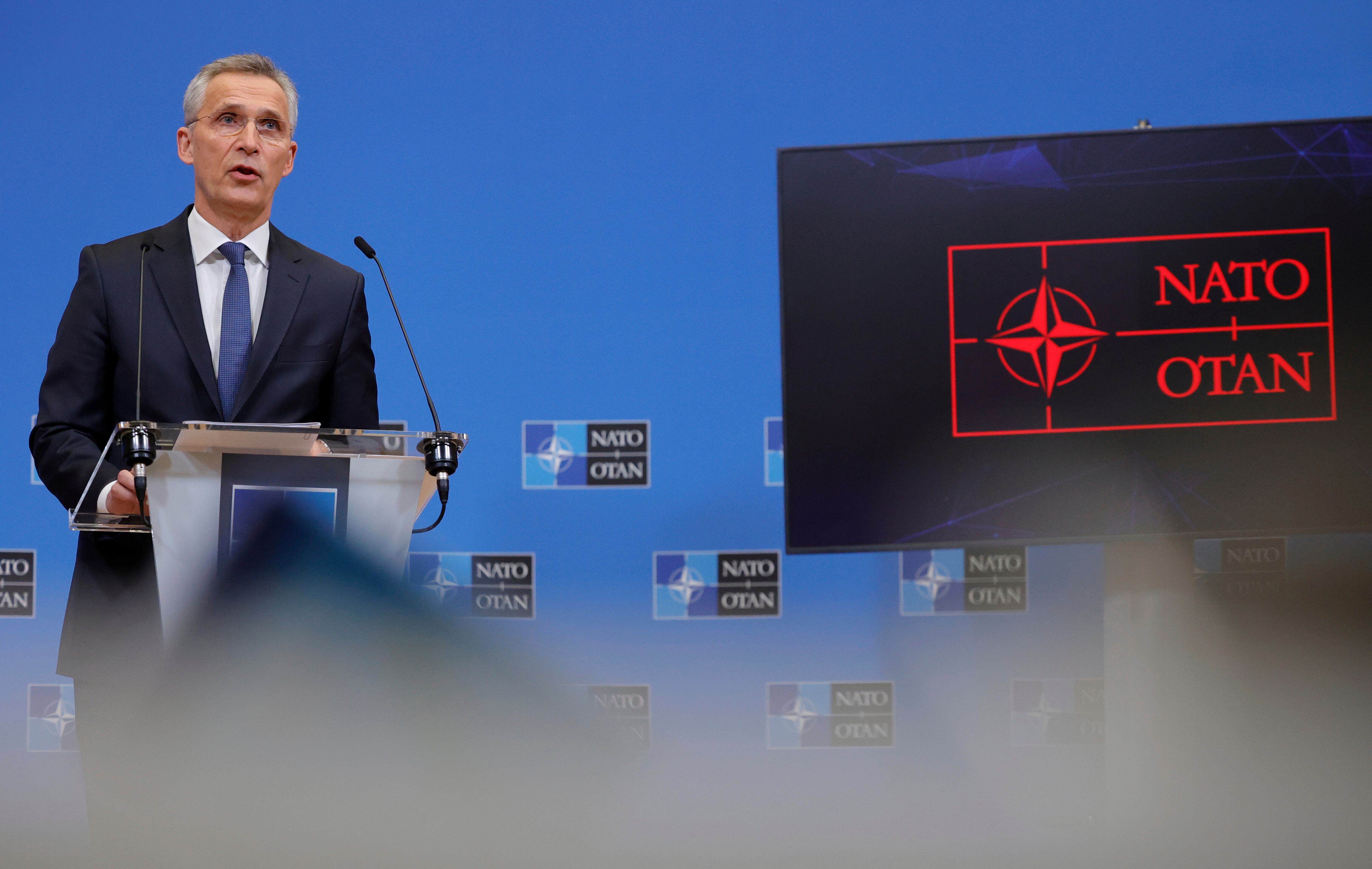
“The most effective response to Russia’s aggression is unity,” Estonian Prime Minister Kaja Kallas tweeted. “Russia’s widespread aggression is a threat to the entire world and to all NATO countries.”
Kallas called for measures “for ensuring the defense of NATO Allies.”
NATO began beefing up its defenses in northeastern Europe after Russia annexed Ukraine’s Crimean Peninsula in 2014. It has around 5,000 troops and equipment stationed there, but those forces have been beefed up with troops and equipment from several countries in recent months.
RELATED
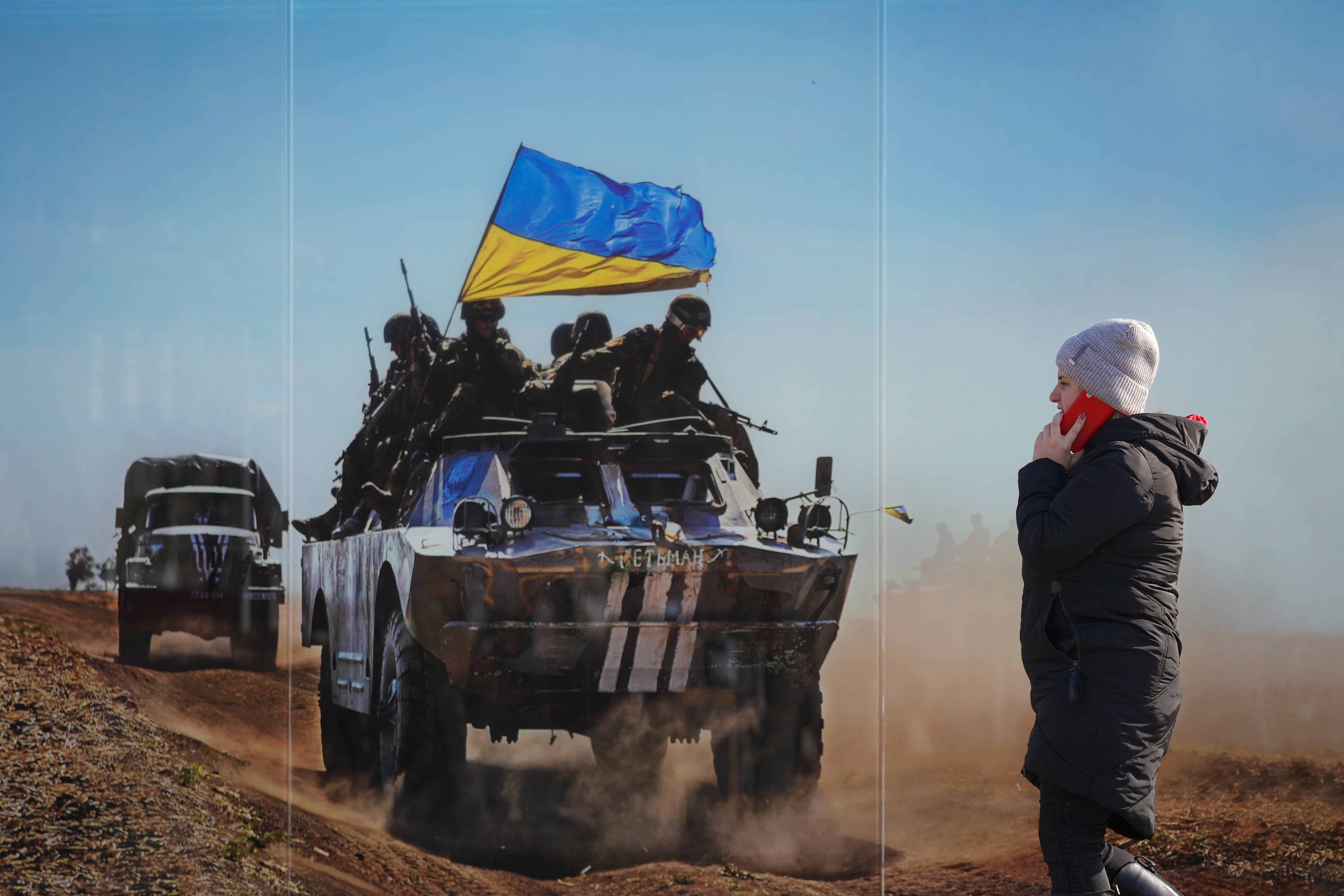
A first step now could be to activate the NATO Response Force, which can number up to 40,000 troops. A quickly deployable land brigade that is part of the NRF — made up of around 5,000 troops and run by France alongside Germany, Poland, Portugal and Spain — is already on heightened alert.
While President Joe Biden has insisted U.S. troops will not fight Russia, there are already forces to the region to bolster NATO allies and may be added.
In the next few days, there will be roughly 7,000 U.S. troops as well as aircraft mobilized in the Baltic states, Poland, Romania and other sites along the eastern edge of NATO. An additional 8,500 troops stationed in the U.S. are on a heightened state of alert to deploy to Europe to take part in that response and reassure other allies.
Some NATO members have also sent troops, aircraft and warships to the Black Sea region, near allies Bulgaria, Romania and Turkey.
Reporter Leo Shane III contributed to this story. Jan M. Olsen in Copenhagen, Denmark and Jari Tanner in Helsinki, also contributed to this report.
This is a developing story. Please stay with Military Times for updates.









